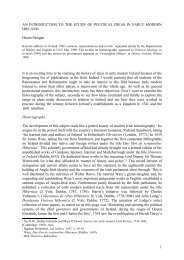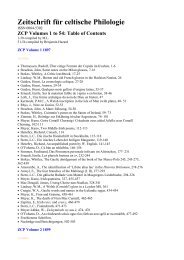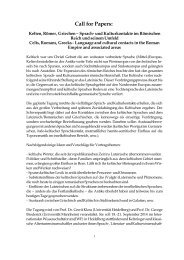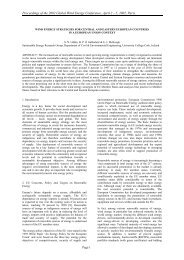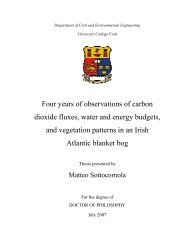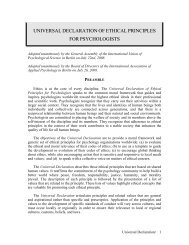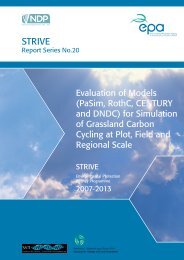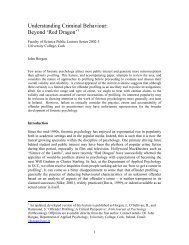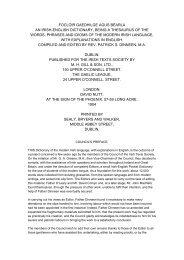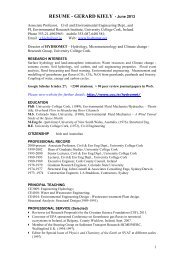PhD Thesis, 2010 - University College Cork
PhD Thesis, 2010 - University College Cork
PhD Thesis, 2010 - University College Cork
You also want an ePaper? Increase the reach of your titles
YUMPU automatically turns print PDFs into web optimized ePapers that Google loves.
Gap-filling techniques for the annual sums of nitrous oxide<br />
6.5. Discussion<br />
The presented approaches had similar outcomes. As was expected sequential<br />
methods still had some gaps in the final time series. The same was observed by Leahy<br />
et al. (2004), who observed two gap periods longer than 5 days in the final time series.<br />
In the case of moving-average technique the length and quantity of the remaining gaps<br />
is influenced by different averaging windows and methods based on extrapolation are<br />
likely to always have some gaps at least in the final daily time series.<br />
In 2007, the largest contribution to the remaining gaps was due the down-time in<br />
the beginning of year. Sequential techniques, effectively, failed to alleviate this issue;<br />
therefore, the obtained annual are considered an underestimation of the true annual<br />
flux. As the first three months of a year have typically little to no agricultural activity,<br />
the N 2 O flux is likely to be low; from our observation in other years, it is estimated that<br />
for January–March period total flux amounts to approximately 0.3 kg N 2 O–N ha −1 .<br />
It is notable that performance of the most trivial approach (annual extrapolation) is<br />
very close to the consensus value in the absence of very long gaps. It shows that when<br />
the required precision is about 0.1 kg N 2 O–N ha −1 this method might serve as good<br />
first estimate of the annual flux.<br />
The look-up table was the only approach that considered the environmental<br />
variables of the flux. This method is sensitive to the parameters selected as well as the<br />
separation limits or bin sizes. All the chosen parameters are well known as the main<br />
drivers of the N 2 O emission (Dobbie and Smith 2003b; Dobbie and Smith 2003a). Lag<br />
periods, 12-hour rainfall and 5-day fertiliser applications, were based on our previous<br />
work at this site and reflected precision of the available data. In this study the LUT<br />
58



